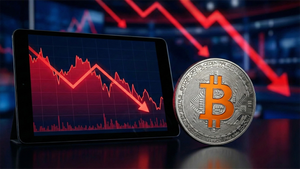Remittances have historically been an essential part of the global economy. The remittance flow is on an upward trajectory, with an average of 10% yearly growth since 2018 (World Bank, 2022). A large number of the world population’s livelihood depends on remittances. For numerous developing countries, remittances are the backbone of their forex reserves.
Hence, remittances are far more critical than projected. Until 2020, most parts of the remittances had no digital footprint. Most people used cash for transactions without any significant involvement from banks. It was because the banking system was not easily accessible in various regions of the world.
The 2020 global pandemic forced the change of conventional transaction methods. During the same year, over 40% of remittances were made through wired transactions for the first time. It highlighted the potential of cross-border digital banking to the people. The system’s efficiency and speed have compelled more and more people to choose digital remittance options since then.
The wired remittance transfers have already exceeded the number of offline remittances in the second quarter of 2023 (Statista, 2023). It can reach a record high by the end of this year. The growth rate is a whopping 84% higher than the previous year. According to Juniper Research, digital remittances will account for 2 Billion transactions by 2027 globally.
A market with such high potential is inviting more investors to secure their share. The fierce competition benefits the consumers. They have got multiple options with varying transaction charges to choose from for their remittances. The regulatory authorities have also simplified the prerequisites to encourage wired remittance transfers. It’s because the funds monitoring is easy and tax deduction is convenient.
Global Trends for Digital Remittances
The leading electronic financial service provider Visa surveyed the global digital remittance trends. The results suggested that around 53% of remittances are sent through digital channels globally. However, the remittances involving cash-based transactions through banks stand at 34%. The survey was conducted in different world regions to indicate the volume and frequency of transactions.
The highest number of digital remittances was recorded in North America, making around 60-70% of the total remittances. The middle eastern region has the same percentage with slight variations. For instance, two major countries in the region, Saudi Arabia and UAE, recorded 69% and 65% digital remittances, respectively.
The adaptivity is highest in the Asian region. Digital methods are widely used for remittances in this region. Most people in the Philippines (57%) prefer digital options to offline remittance methods. Similarly, in Singapore, around 61% of the people surveyed frequently use digital methods for remittances. It shows the region’s record high number of digital remittances in the coming years.
What drives people to choose digital remittance transfer methods?
When asked about their reasons for preferring online methods, most people gave security and convenience of the process as their reasons.
Another survey conducted by IFAD showed the growing trends of remittances in the African region. Around $60.5 billion in remittances were received in the region in 2017. It is 117% higher than 44.3$ received back in 2007. Although there’s no authentic information on digital remittances in this region, it’s suggested that a significant growth in wired remittances is observed, especially in Kenya and Nigeria.
Moreover, global remittances are projected to amount to $750 billion in 2023. Compared to 2014, the amount stood at $152 billion only. This surge within a decade is massive. The remittances’ share in the global economy is increasing at a higher pace than ever before.
It has come from app-based banking solutions. The transactions have become seamless without requiring much effort or paper. The convenience and connectivity allow people to send and receive remittances quickly. The trends for digital remittances will continue to grow.
Most Used Digital Remittance Methods
Digital wallets and banking apps are mainly used for digital remittances. These revolutionary technological developments have changed the dynamics of the banking system. Digital banking options have opened up limitless possibilities for consumers. Cash and paper are things of the past today.
According to Juniper Research, around 67% of digital remittances were transferred through mobile banking apps in 2022. The same research projected that the percentage will rise to 73% by 2027. The extensive usage of mobile banking apps and wallets for digital remittances is due to the reasons below;
- Online banking offers a safe and secure transaction environment without the involvement of cash.
- The mobile applications are user-friendly and highly interactive. They provide the utmost convenience for funds transfer.
- Tracking and monitoring transactions are easy and don’t involve any third party for verification or updates.
- The applications also offer a wide array of services apart from digital remittance options.
Cost Comparison Between Digital Remittance and Alternative Options
The primary reason for the boom in digital remittance is low taxes and deductions. Digital remittance service providers are taking every step to capture the market. As a result, the cost of remittances has reduced significantly in the past few years. Money transfer apps are undoubtedly cheaper as they offer lower fees and better exchange rates than traditional banks.
Considering the dependence of common people on remittances, the UN Sustainable Development Goals (SDGs) have also urged to reduce these costs for the good of people. The aim is to take down remittance services costs to 3% by the end of 2030.
According to reports from Paypal and Xoom, the deductions for remittance services stand at 3.94% in most online platforms. It’s comparatively low from alternative methods used for remittances. You can also save money using online platforms like Paypal for your remittances.
The Way Forward
Undoubtedly, digital remittances offer a whole lot of benefits. There’s still some room for development. The technology could be enhanced to reduce service fees and platform fees further. There should be options for unbanked regions of the world to provide easy access to everyone. The legal technicalities can also be improved to provide better user services.
Remittance pays for the livelihood of over 800 million families globally. It should not be taken for granted. The governments and the service providers should take every step to make it accessible to the people.
Read more investing news on PressReach.com.Subscribe to the PressReach RSS feeds:- Featured News RSS feed
- Investing News RSS feed
- Daily Press Releases RSS feed
- Trading Tips RSS feed
- Investing Videos RSS feed
Follow PressReach on Twitter
Follow PressReach on TikTok
Follow PressReach on Instagram
Subscribe to us on Youtube

















